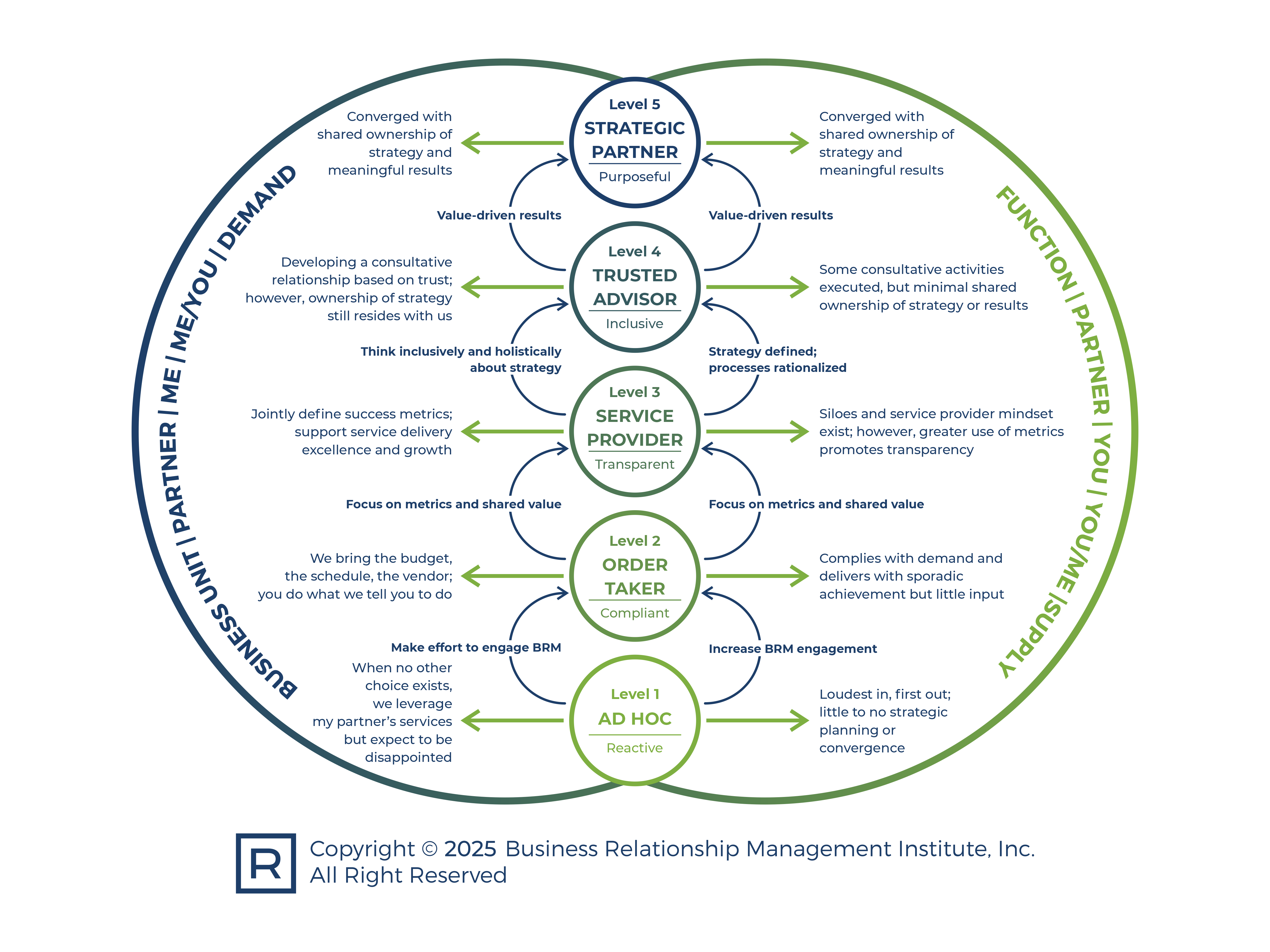The Future of Work is Relationship-Centric: Here’s Why BRMs Lead the Way

The workplace is evolving at an unprecedented pace. Shifting workforce expectations, and the demand for agility in business have redefined how organizations operate. While technology plays a significant role, the most successful organizations understand that the future of work is not just digital—it’s relationship-centric.
BRMs don’t just bridge business and technology—they foster a culture of collaboration, trust, and shared purpose. The BRM capability ensures that organizations don’t just execute strategies but build relationships that drive sustainable business value.
From Transactions to Trust
Traditional business models have long been transactional—focusing on short-term gains and operational efficiency. But the modern workforce expects meaningful engagement, transparency, and alignment with organizational purpose. Relationship-centered organizations thrive because they emphasize trust over transactions.
Instead of viewing interactions as one-off exchanges, these organizations invest in long-term partnerships—with employees, customers, and stakeholders. This shift fosters greater loyalty, collaboration, and innovation, as people are more willing to engage when they feel valued and heard.
BRMs play a crucial role by helping organizations move from “What can we deliver?” to “How can we create value together?”. By focusing on trust-building, BRMs ensure that business relationships are mutually beneficial, sustainable, and purpose-driven, leading to stronger engagement and lasting success.
Breaking Down Silos
The success of any organization depends on its ability to integrate knowledge, expertise, and resources across departments. However, traditional organizational structures often create silos—departments working in isolation, misaligned priorities, and limited collaboration.
BRMs act as connectors who break down these silos, ensuring that business units, IT, HR, finance, and other key areas work together toward common goals. By fostering relationships across functions, BRMs enable a culture where collaboration drives innovation and business value.
Aligning People, Purpose, and Business Strategy
In today’s workplace, employees are seeking purpose-driven work. Organizations that align their people with a shared vision and business strategy see higher engagement, innovation, and retention.
BRMs play a crucial role in ensuring that leaders, teams, and stakeholders are aligned. By focusing on shared ownership of business outcomes, BRMs help organizations move beyond top-down decision-making to a model where every stakeholder is invested in success.
Shaping Customer and Employee Experience
Organizations today compete on experience—not just for customers, but for employees as well. A relationship-driven culture ensures that organizations don’t just deliver products and services but build lasting relationships with customers and employees.
BRMs help organizations craft experience strategies that are not just reactive but proactive. Whether it’s improving employee engagement, enhancing customer loyalty, or driving a seamless digital experience, BRMs ensure that every interaction is meaningful.
The Relationship Maturity Model: How Organizations Evolve
For organizations to thrive in a relationship-centric future, they must mature in how they build and sustain relationships. The Relationship Maturity Model (RMM) provides a framework to assess and elevate an organization’s approach to relationships.
Why BRMs Are the Key to Relationship Maturity
The future of work demands organizations to be relational, not just operational—and BRMs are the catalysts for this shift. By helping organizations move up the Relationship Maturity Model, BRMs:
✅ Shift organizations from transactional to strategic thinking
✅ Ensure business and IT (or other functions) work as trusted partners
✅ Drive business value through collaboration, not just service delivery
✅ Champion a culture of shared ownership and innovation
In a world where technology is rapidly evolving, the one constant is relationships. Organizations that invest in BRM as a capability will not only keep up with change but lead the way into the future of work.
Final Thought: Are You Ready to Lead with Relationships?
The future belongs to relationship-centered organizations. Whether you are a CIO, CEO, or a business leader, embracing BRM principles can transform how you lead, collaborate, and create lasting business value.
The question is: Is your organization ready to evolve?
